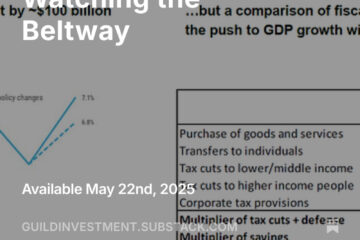Why We Believe that U.S. Long-term Interest Rates May Rise this Year
The Federal Reserve is likely to raise interest rates in September. However, whether it does or not, longer-term rates will rise over the next few months. The Fed does not have control over long-term rates; they have only been able to control short-term rates with the QE program. Long-term rates depend on market psychology, and also on other market participants’ views about the Fed’s ability to extricate itself from the conundrum of near-zero short-term rates. The Fed needs to get short term rates up at least a little, so that if another problem develops in the global banking system, they’ll be able to lower those rates in response. Until short-term rates are up, the Fed’s conventional policy kit to stimulate the economy will be unavailable.
Last week, U.S. aggregate bond market indices moved to a year-to-date loss as longer-term interest rates rose.

TLT (iShares Barclays 20+ Year Treasury Bond ETF) Year-to-Date — Safe Haven No More Source: Google Finance
We believe that the summer will be filled with strong economic data. U.S. GDP was hurt by two transitory factors in the first calendar quarter: bad weather in the eastern and midwestern U.S., and the port strike in the west. GDP was down 0.7 percent. We have no doubt that the second and third quarters will be stronger. Economic data indicate that we are seeing a pick-up in jobs, that many formerly discouraged workers are reentering the workforce, and that average wages are enjoying a small uptick. All of this points to strengthening economic results for the April-through-September period in the U.S.
With stronger GDP growth will come stronger bond yields and lower bond prices. The economy is stronger, and costs are rising because:
• Oil has bottomed;
• Service costs are rising;
• Taxes are rising;
• Health care costs are rising.
In spite of a strong U.S. dollar, we will see rising corporate profits for almost every industry in the summer months, especially homebuilding and regional banks.
Recent Events
Recently, several cautionary events have unfolded which argue for higher interest rates in the U.S. sooner rather than later.
First, William Dudley, head of the New York Fed and a confidant of Fed Chair Janet Yellen, said last Friday: “It is likely that conditions will be appropriate to begin monetary policy normalization later this year.” Mr. Dudley pointed out that 280,000 new jobs in May represented widespread gains, and the gains were accompanied by slightly higher wages. Mr. Dudley hedged by saying a move was not certain, but his hint has been heard. The Federal Reserve Open Market Committee (FOMC) meets on June 16 and 17, and will strategize about interest rate increases. Historically, the FOMC has said that it will raise rates when it is “reasonably confident” that inflation will rise to 2 percent over time.
Second, wages for private sector employees are up 2.8 percent in the last year after rising 0.7 percent in May.
Third, Canadian job growth was stunningly good. Canada is not the U.S., but our economies are strongly intertwined. In the last few months, Canadian factory job growth has been the strongest since 2002. This shows jobs are moving from energy to factory areas.
Finally, many new jobs are being created as workers join the ranks of the self-employed. The number of business startups rose in 32 of 50 states in 2014, and continue to move ahead in 2015. This is a clear indication of entrepreneurial self-confidence and a conviction that opportunity awaits. These are ingredients of the recovery that have been in short supply until now.
We believe that the Fed will raise interest rates in September, and anticipation of Fed action will be bad for bonds over the coming months. Among stocks, only insurance companies and banks (particularly regional banks) will benefit from higher interest rates.

